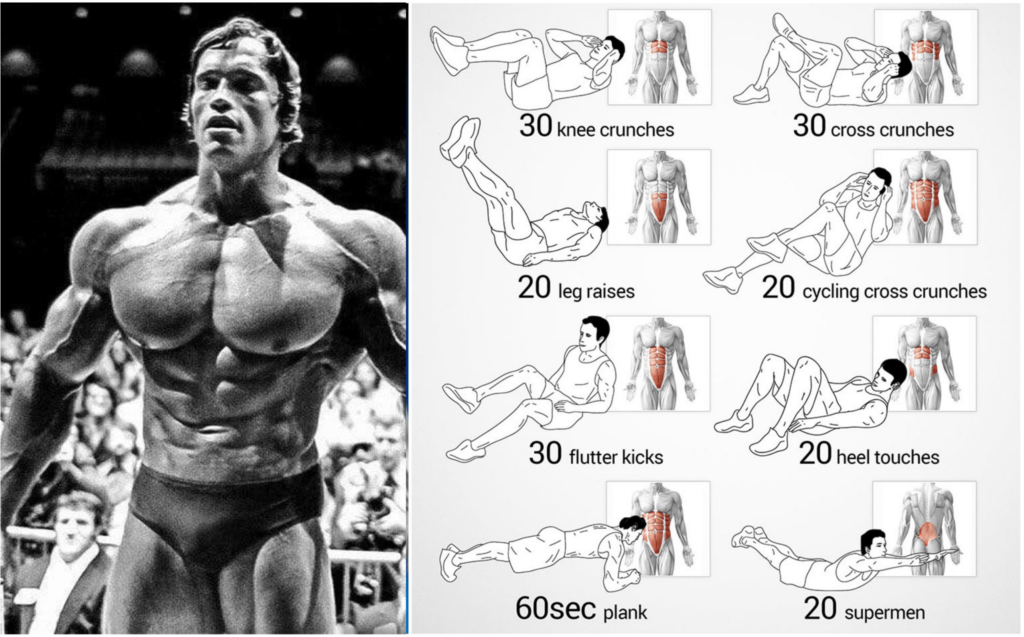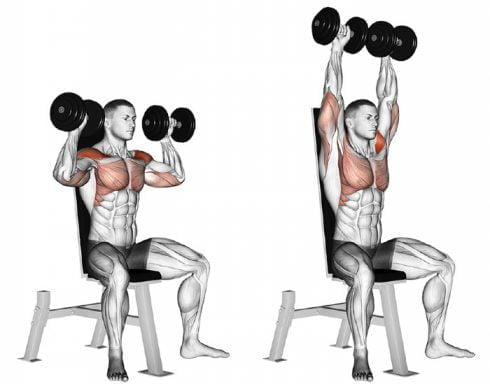Overview
Hello Guys, Thanks for visiting our website. Today we will discuss “Knee-Friendly Cardio Exercises For Athletes”. Moreover, we will discuss Knee-Friendly Quad Strengthening Exercises. So let’s dig into the topic and read in brief.
Strengthening the muscles that support your knee reduces strain on the joint. Strong quadriceps and hamstring muscles help your knee joint absorb shock. The less strain you put on your knee, the better your chances of pain relief and avoiding further injury.
Cardiovascular exercises are necessary for any fitness regimen, but they can be painful for people who have bad knees. Only certain knee exercises are safe and effective for knees that require extra care. Your abilities will vary depending on your injury, but the following knee exercises are frequently performed with ease. Consult your doctor or physical therapist before beginning any “bad-knee” exercise program.
Knee-Friendly Cardio Exercises For Athletes
With our 8 favorite knee-friendly cardio exercises for athletes, we’ll keep you moving and working towards your goals!
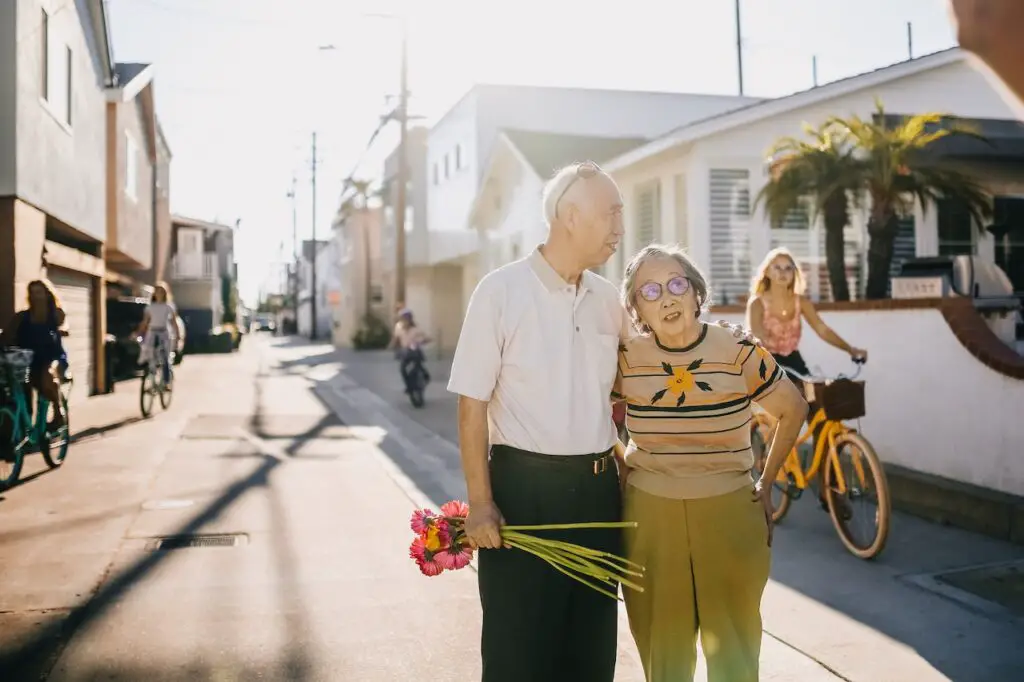
Walking (including speed walking) is a good knee-friendly cardio workout if you keep a brisk pace. Just make sure you wear supportive shoes and stretch before starting your walk. Begin by walking on flat surfaces, then progress to hikes once your walking muscles have been developed.
SHOP FOR RUNNING SHOES ON AMAZON
Swimming
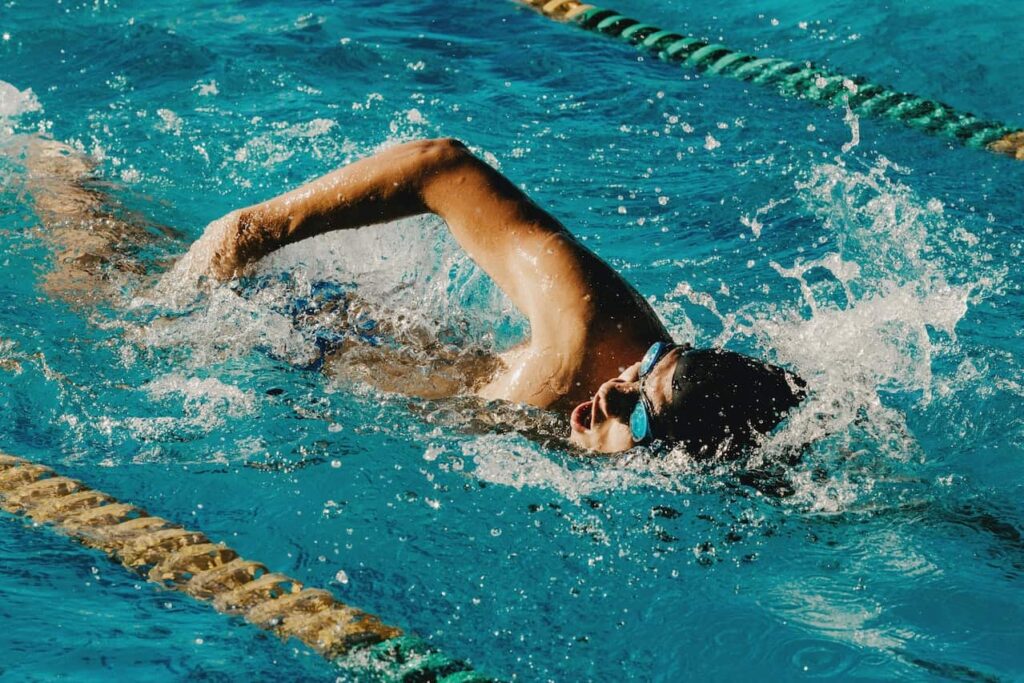
Swimming is one of the best exercises for people who have knee problems. You can quickly burn a lot of calories while working out all of your muscles. Just avoid kicks that put a strain on your knees and avoid pushing off from the wall. You can improve your workout by doing water aerobics, jogging in place, and resistance training with water weights while in the water.
SHOP FOR SWIMMING SUITS ON AMAZON
Elliptical Machine
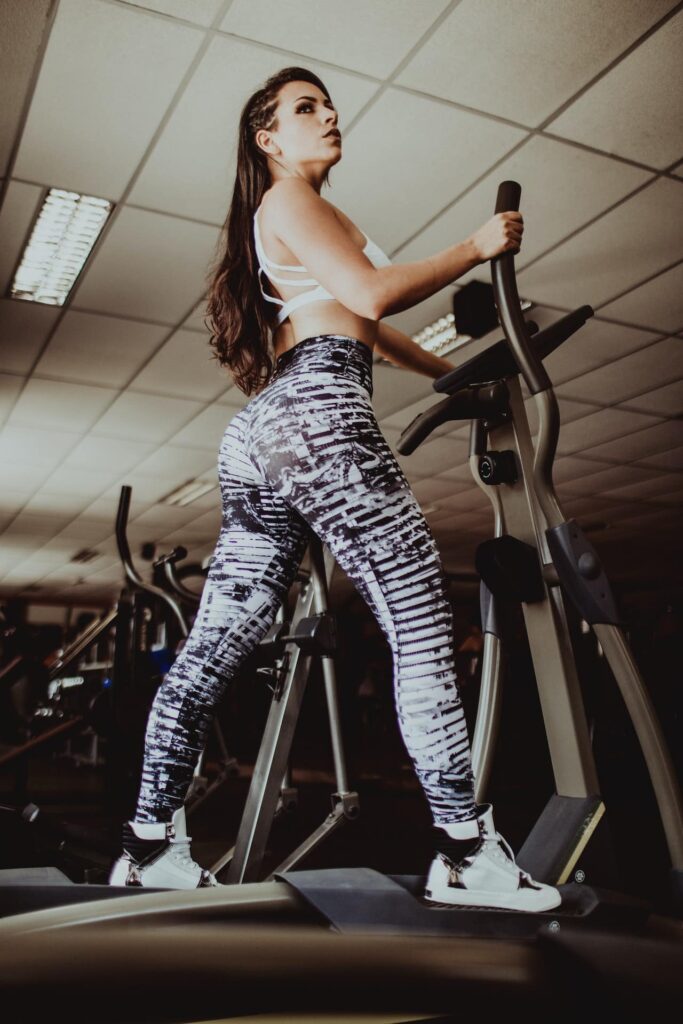
Exercise puts strain on the body and can aggravate inflammation, so choose an elliptical machine over a treadmill to reduce the risk of a knee injury,’ explains Furmedge. ‘Because your feet never leave the pedals, there is less chance of injury to your knees, back, neck, or hips.
You’ll also raise your heart rate, which aids in the burning of calories and the development of cardiovascular fitness. Increase the resistance to put your endurance to the test.
Low-Resistance Circuit Training
Low-resistance circuit training entails rapidly switching from one machine to the next with little or no rest in between. This raises your heart rate, burns calories, and strengthens your muscles. Your knee pain should decrease as your legs gain strength and muscle tissue grows. Just make sure not to overdo it.
Rowing
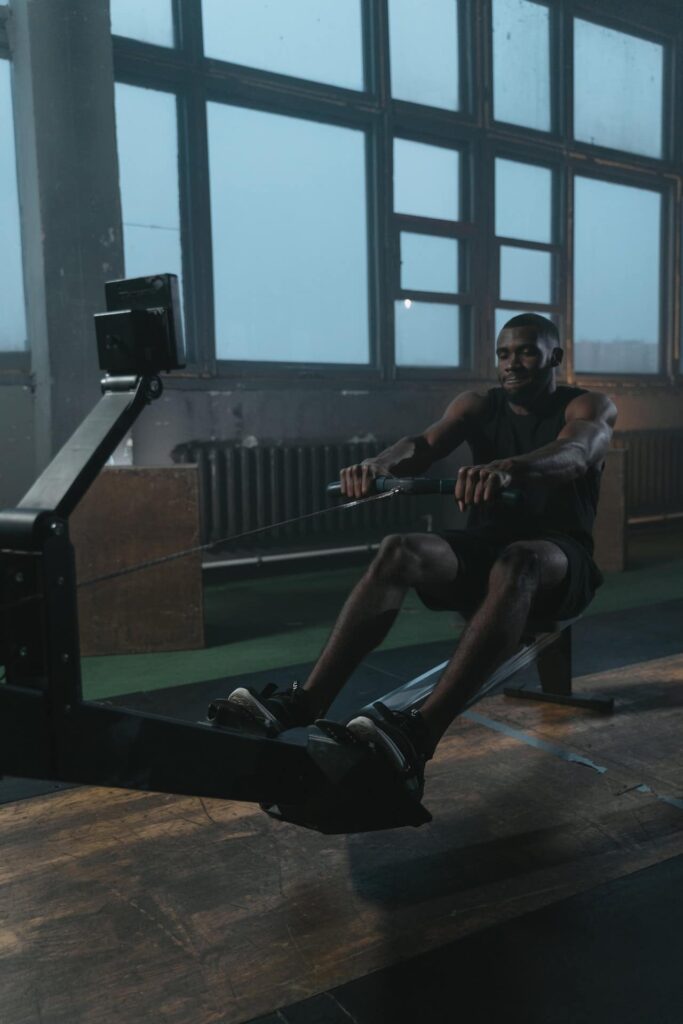
Rowing is another excellent way to burn calories while minimizing knee impact. You’ll be able to strengthen your core while also working out your arms and legs. Rowing is a total-body workout. There are also more difficult options available by varying your resistance and tempo during your workout.
Cycling
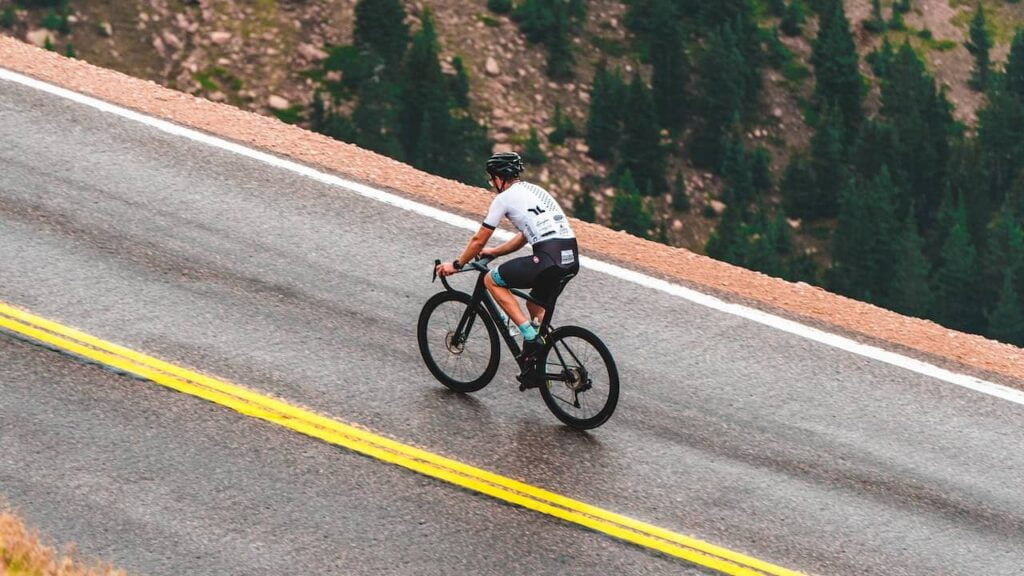
Many people enjoy cycling for cardio exercise because it provides a great fat-burning workout whether done inside or outside. Cycling can help you improve your knee flexibility as well as your overall strength.
If you have sore knees, here are some tips for when you first start cycling. To avoid stress on your knees, for the time being, stay on flat terrain and avoid hills when cycling outside. If you have knee flexibility issues, raise your seat slightly to prevent you from bending your knees as much when pedaling.
Pilates
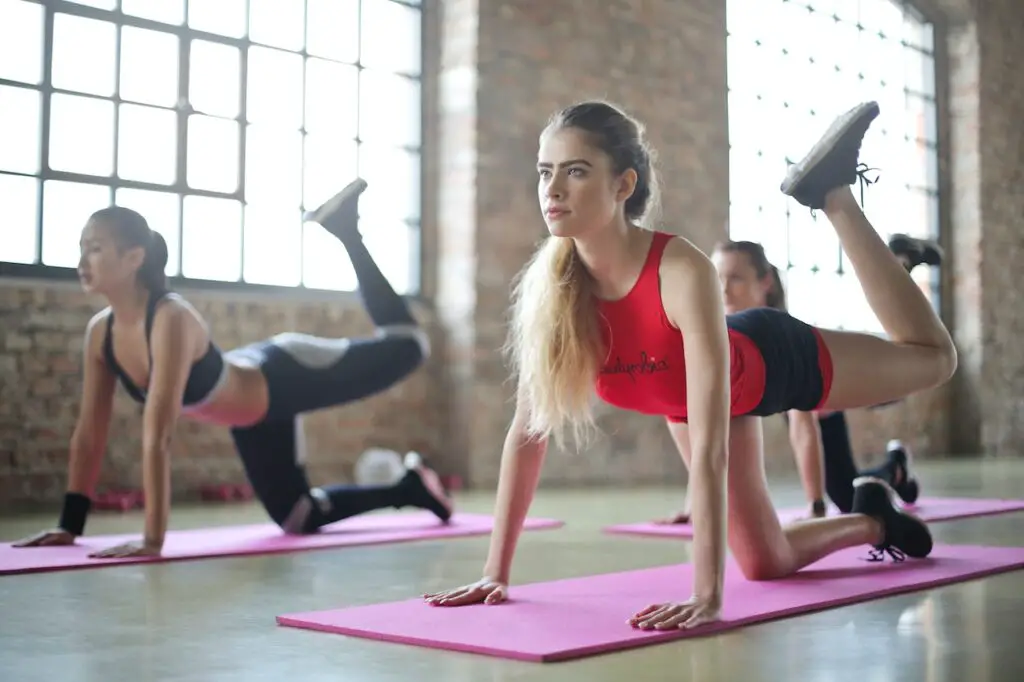
Pilates may not be the first thing that comes to mind when looking for the best exercise for bad knees, but it is a fantastic option! Pilates is an all-over body workout.
Pilates is one of the best options for improving joint mobility and overall muscle tone in the lower body if you have knee problems.
Step-ups
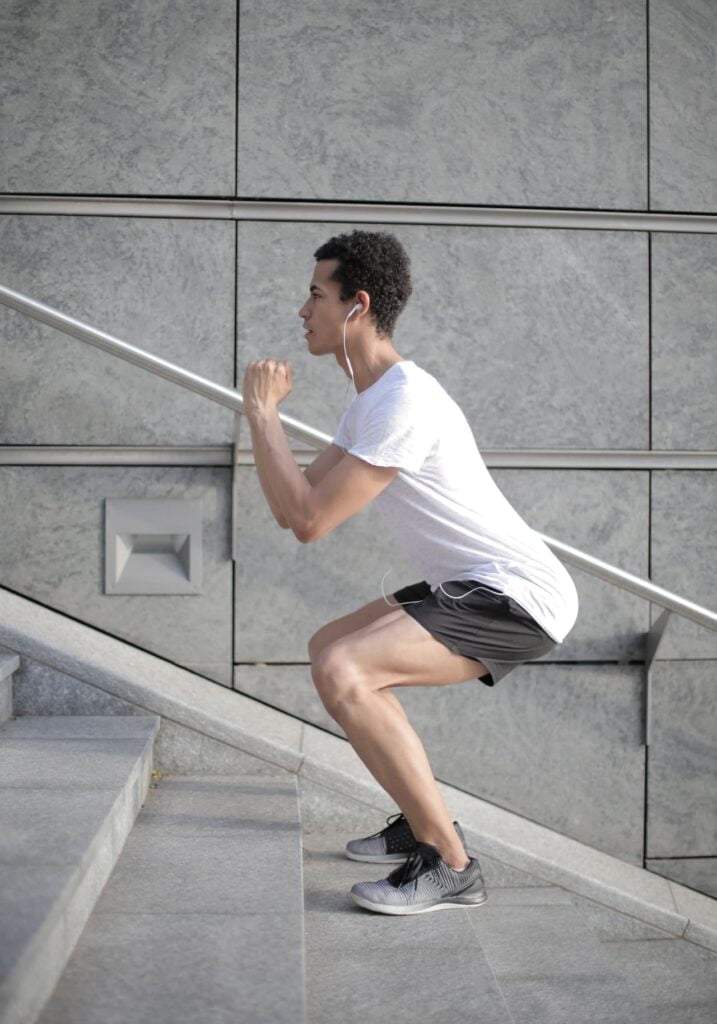
The step bench is one option for a low-impact workout. This type of exercise will get your heart rate up, and as long as the steps aren’t too steep, you should be able to do it even if you have bad knees. There are a variety of step classes available online to make step-ups a more interactive and enjoyable cardio exercise.
Above we discussed 8 knee-friendly cardio workouts for athletes. These workouts are effective if you have any knee injury or pain. These exercises are recommended by experts. Your abilities will vary depending on your injury, but the following knee exercises are frequently performed with ease.
Knee-Friendly Quad Strengthening Exercises
When training legs, the knees take a lot of abuse, and many lifters will experience knee pain throughout their lifting careers.
Knee-friendly quad exercises are important when your knees hurt during traditional leg workouts, and they are also important in preventing future knee pain.
We’ve compiled a list of 7 knee-friendly quad strengthening exercises to help you reduce knee pain and build stronger quads.
Squats
The squat is a compound movement, which means it engages multiple muscle groups across multiple joints. Your quadriceps (the muscles in the front of your thighs) and glutes are the primary muscles involved in the movement (your butt muscles).
The muscles in your hamstrings and hip flexors fire during the eccentric portion of the move, or the lowering portion of the squat. Squats also work the muscles around the knee, which aids in strength development and injury prevention.
Steps to follow:
- Place your feet slightly wider than hip-width apart and your shoulders back.
- Bend your knees and push your hips backward, sinking them lower to the floor until they’re around the level or lower than your knees (start higher if you’re just starting).
- Try not to let your knees protrude any further than the tips of your toes – you should feel as if you’re sitting back in an invisible chair.
- Hold for a moment in this low position, pushing through your heels, thrusting your hips forward, and straightening your knees.
- Repeat.
Hip Thrusts
If you want to bulk up and strengthen your thighs, the hip thrust should be part of your workout routine.
The hip thrust, a bent-leg hip extension exercise performed with your back on an elevated surface, is a favorite of lifters everywhere for its unique ability to target the posterior chain — particularly the glutes.
Steps to follow:
- Position yourself with your back to an elevated surface (such as a bench or a box), knees bent, and feet flat on the ground.
- The bench should be about shoulder-width apart and just below your shoulder blades. On the bench, you can rest your elbows.
- Push through your heels with your chin tucked until your thighs are parallel to the floor — your legs should form a 90-degree angle.
- Return to the beginning by squeezing your glutes at the top.
Bulgarian Split Squats
The Bulgarian split squat is a single-leg squat variation in which the back leg is elevated on a bench or a sturdy chair. As a single-leg, unilateral squat, the exercise targets the quadriceps more than other lower-body compound movements.
The Bulgarian split squat is an excellent compound lower-body exercise to include in a lower-body strength or total-body workout routine.
Steps to follow:
- Begin by positioning yourself about 2 feet in front of a knee-level bench or step.
- Raise your right leg behind you and place your foot on the bench. Your feet should still be shoulder-width apart, and your right foot should be far enough in front of the bench that you can lunge comfortably — hop around a bit to find the right spot. If a closer foot position works for you, just make sure that when you lower down, your left knee does not cross over your toes.
- Roll your shoulders back and lean slightly forward at the waist, starting to lower down on your left leg, bending the knee.
- When performing a quad-dominant Bulgarian split squat, stop before your knee crosses over your toes. Stop when your left thigh is parallel to the ground when performing a glute-dominant Bulgarian split squat.
- To return to standing, push up through your left foot, utilizing the power of your quads and hamstrings.
- Rep to this leg for the desired number of reps, then switch, putting the left foot up on the bench.
Sumo Deadlifts
The sumo deadlift is a variation that employs a wider foot stance, similar to how a sumo wrestler prepares for a match. This variation of the deadlift is often less taxing on the lower back and spine while still challenging the same muscle groups.
The sumo deadlift is especially useful for people who find that traditional deadlifts aggravate their lower back.
Steps to follow:
- Step up to the bar with your feet wide apart. A good starting point is to place the bar across the middle of your foot and stand wide enough so that your shins are vertical when viewed from the front.
- Inhale deeply, bend down, and grasp the bar.
- Hold your breath, slightly brace your core, and raise the bar.
- Pull the bar close to your body, keeping your back straight, until you are standing straight.
- Return the bar to the ground with control.
- Repeat for as many reps as you can.
Single Leg Lifts
The single leg lift is a calisthenics and pilates exercise that primarily targets the abs while also targeting the hip flexors and lower back to a lesser extent.
Steps to follow:
- Lie on your back with your hips square and your legs comfortably spread out on the floor.
- Bend your non-injured leg’s knee to 90 degrees and place your foot flat on the floor.
- Contract your quadriceps to stabilize the muscles on your straight leg (the group of muscles on the front of your thigh).
- Lift the straight leg six inches off the ground while inhaling slowly.
- Hold the position for three seconds.
- Exhale slowly and slowly lower the leg to the floor.
- Relax and repeat 10 more times.
Plank Leg Lifts
Planks are another popular exercise among fitness enthusiasts; while simple, planks target nearly all of the muscles in your body. By incorporating a leg lift into a plank, you can shift the emphasis to your quads.
Steps to follow:
- Begin in a high plank position, with arms straight, palms firmly planted on the floor, and feet hip-width apart.
- Maintain a straight line from your shoulders to your feet by engaging your core and not dipping or raising your hips.
- Raise your right leg off the floor to around hip height while keeping your abs tight and leg straight.
- Pause for a moment before lowering to the floor gently.
- For the required number of reps, alternate legs.
Leg Extension
Another great piece of gym equipment, the leg extension machine almost entirely targets your quads, making it an excellent exercise to include when attempting to strengthen this muscle area.
Steps to follow:
- Place your legs behind the weighted pad in front of you and sit on the machine.
- On the front of your legs, it should be about ankle-to-shin height.
- Determine an appropriate weight (again, start without any to check your form before gradually building up weight).
- Engage your core muscles while keeping your shoulders back and your head straight.
- Straighten your legs, focusing on your thighs, and press the pad upwards.
- Hold for a moment at the top before slowly descending.
- Repeat.
FAQs
Q. What exercises can I do instead of squats for bad knees?
If you have knee problems, machine leg presses, step-ups (start low), floor bridges, RDLs, and leg curls are great ways to strengthen your legs without putting too much strain on your knees.
Q. What exercises should you avoid if you have bad knees?
Full-arc knee extension, including using a machine at the gym, full-deep lunges, deep squats, and Hurdler’s stretches are the worst exercises for knee joints for people with bad knees because they place excessive strain on the knee joints and can increase pain and cause injury.
Q. Is it okay to skip leg day if my knee hurts?
If you’ve had a knee injury, whether minor or severe, recurring or one-time, it will affect how you approach your workouts. Heavy leg days are out, conditioning work is strongly advised, and injury management with ice and stretching will make things easier.
Q. Do bad knees ever get better?
If you just strain or sprain your knee, it will heal on its own if you give it time to rest and repair. Surgery may be required for severe injuries such as ligament or cartilage tears. However, in many cases, even surgery does not completely resolve the problem, and the knee does not return to its original healthy state.

Good day, and welcome to Fitthour. My name is Shubham Vijay, and I am a certified personal trainer and nutrition coach with 6 years of experience in the fitness industry. At Fitthour, we specialize in types of training, such as strength training, cardio, or HIIT, and our mission is to help clients achieve their fitness goals and improve their overall health.

